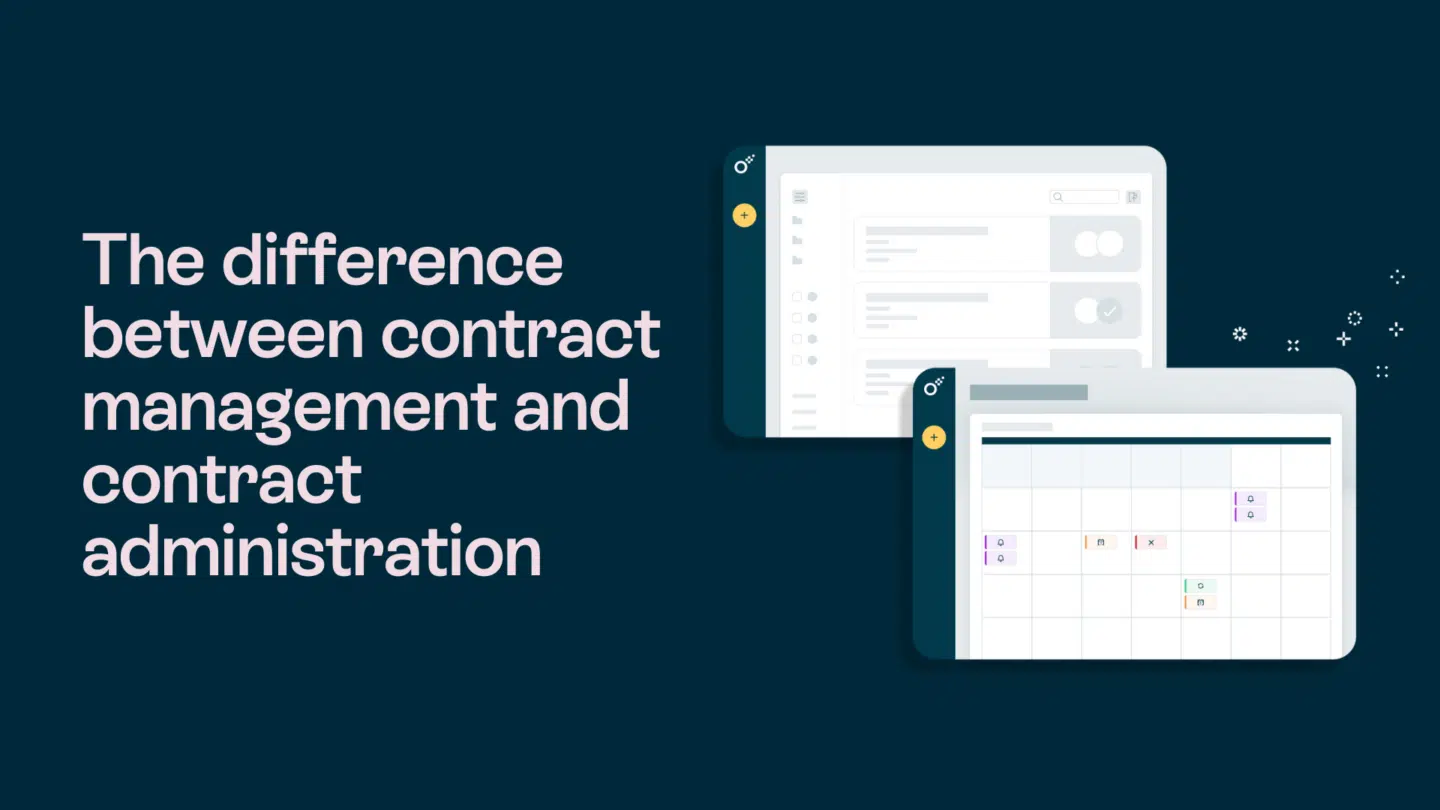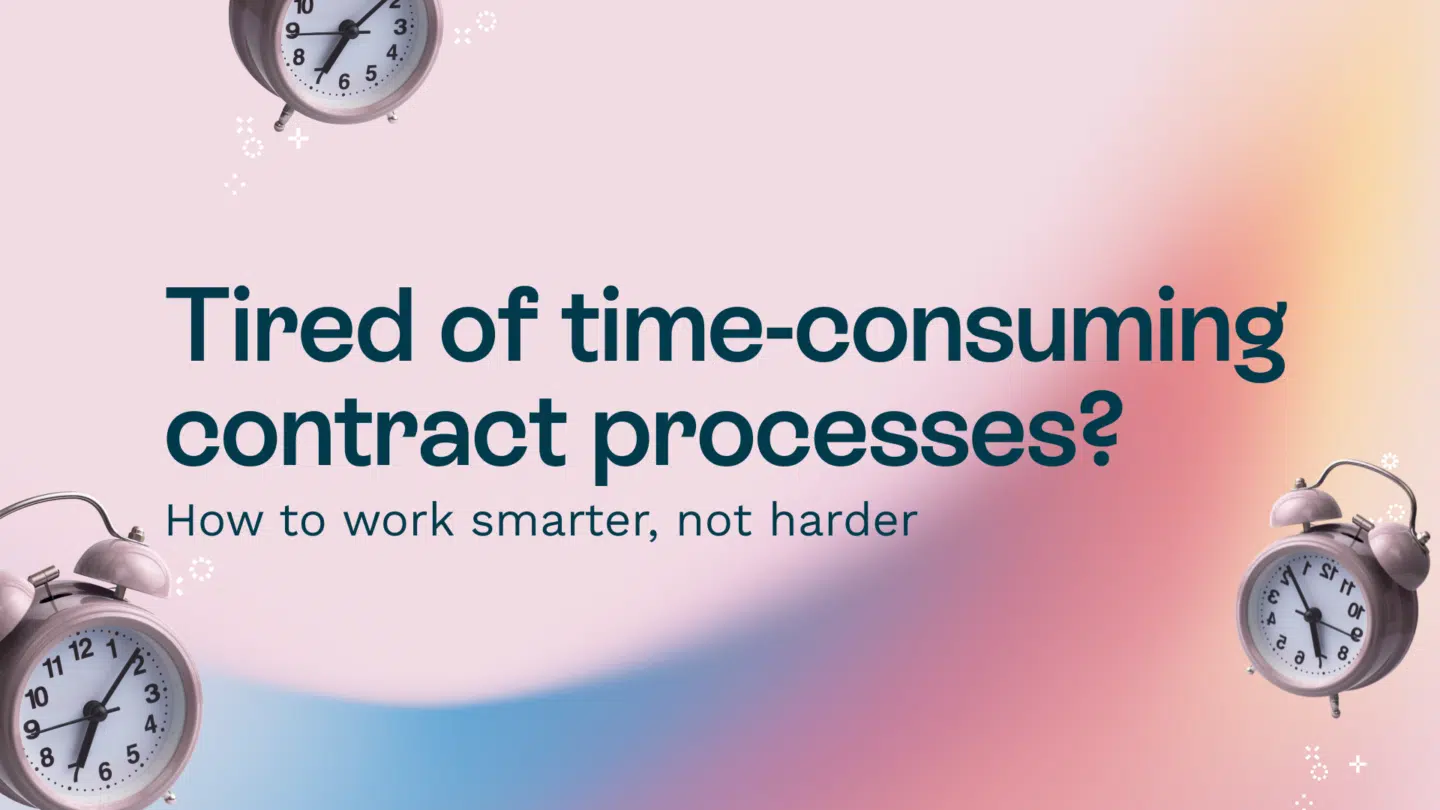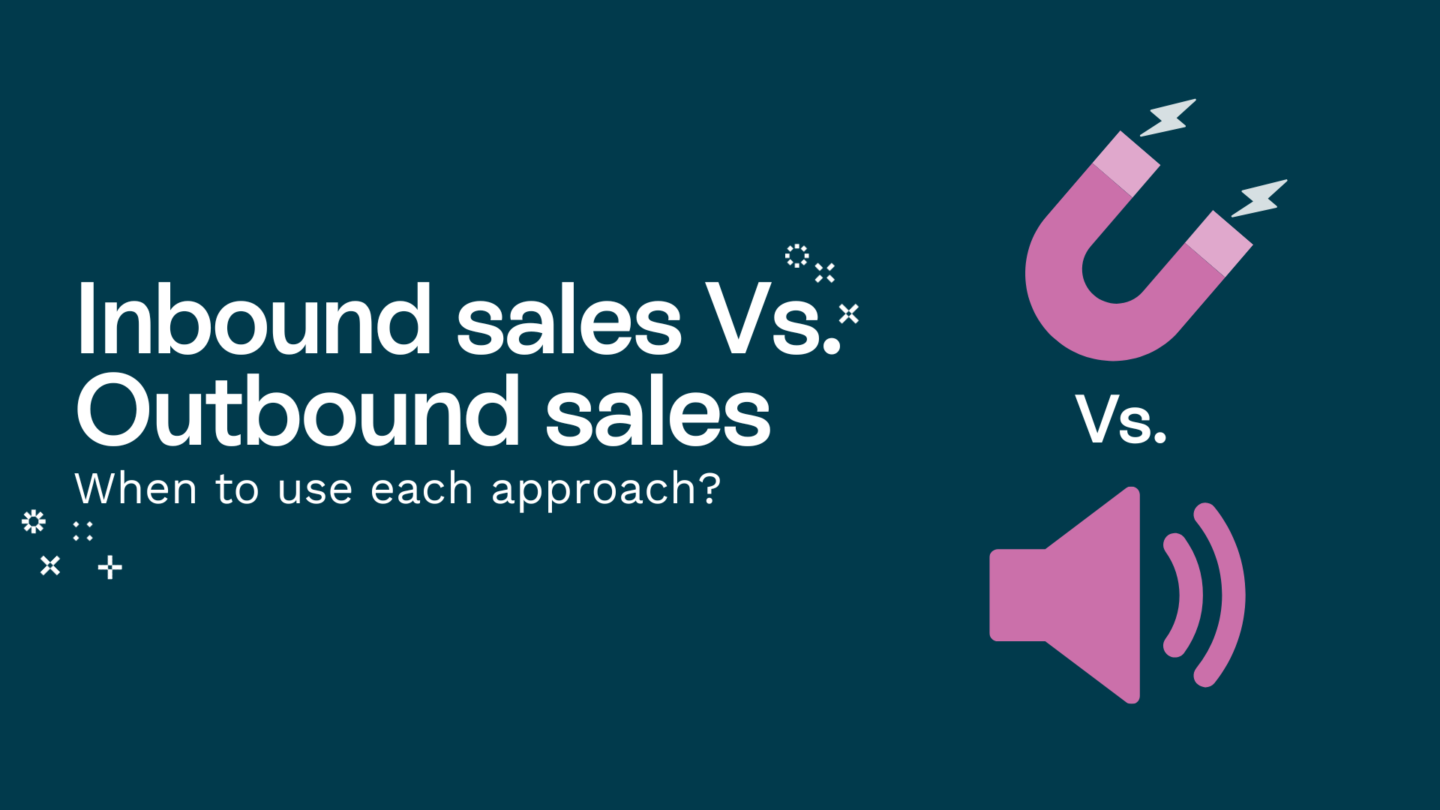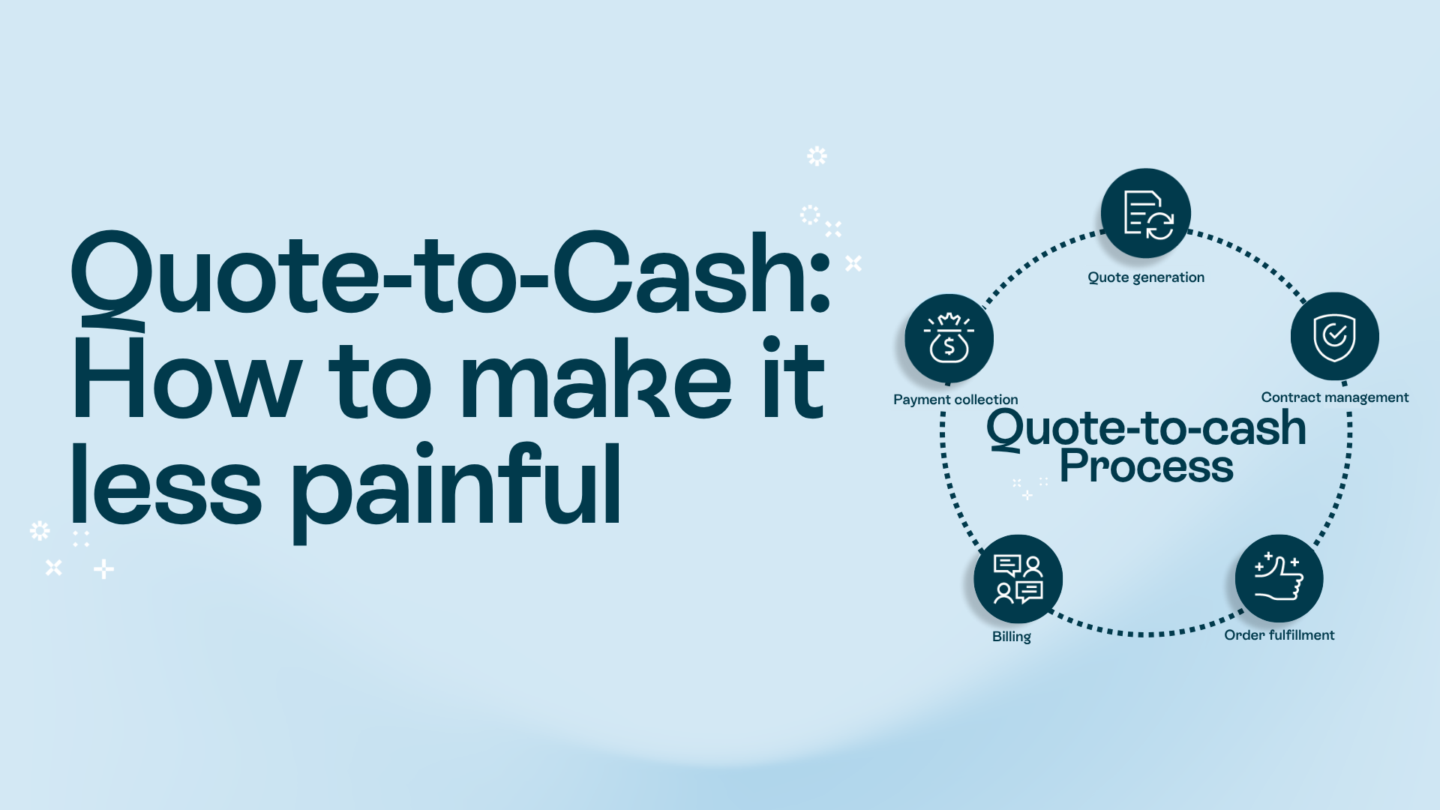For multiple businesses, managing documents still involves tools that only promise to automate, but don’t quite deliver. Poor organization across disconnected systems, messy version control (or worse—none). Sounds like you? It slows things down and creates room for errors.
If you’re tired of juggling multiple tools just to get your contracts finalized and end up with 50 versions of the same file, a digital signature API is a great solution. It lets you build signing, sending and tracking directly into your existing systems—your CRM, HR tool, internal app or your own website.
But how do you pick the right API? In this guide, we’ll explain what to look for when choosing one that fits your business, your workflows and your future growth.
What is a digital signature API?
A digital signature API lets platforms automatically send, sign and manage documents without manual input. Users don’t have to download files, send them via email and wait for someone to sign, because the API automates the process.
When choosing the right API, it’s crucial to understand the difference between electronic and digital signatures. While an electronic signature is any digital mark showing agreement (e.g., typed name, checkbox), a digital signature is an encrypted, identity-verified signature using public key infrastructure (PKI). Electronic signatures are easy to use, but less secure. Digital signatures are legally binding, tamper-evident and more secure, suitable for legal contracts and any documents requiring verified identity and compliance.
Common use cases for digital signature APIs
Digital signature APIs are versatile and can be integrated across industries and platforms to streamline document workflows. Some of the most common use cases include:
- CRM systems—Automate contract sending, approval and signature collection directly from sales pipelines, speeding up deal closures
- ERP and billing systems—Facilitate automated approval and signing of purchase orders, invoices and financial agreements to ensure smooth transactions
- HR and onboarding platforms—Simplify the signing of employment contracts, NDAs and policy documents, making onboarding faster and fully digital
- Legal and compliance tools—Manage sensitive agreements securely, ensuring signatures are legally binding and compliant with industry regulations.
- Fintech and banking systems—Enable secure, compliant signing of loan documents, account agreements and consent forms without manual paperwork
- Healthcare and government apps—Ensure data compliance while digitally signing medical records, consent forms, and official documents in regulated environments
Key features to look for in a digital signature API
Choosing the proper digital signature API isn’t just about getting documents signed—it’s ensuring a secure, smooth and scalable experience that fits into your business workflows. Here are the features to look for.
Security and encryption
Look for APIs that meet industry standards, including ISO 27001, GDPR, and eIDAS. Ensure they provide end-to-end encryption and tamper-proof signatures to protect your documents and ensure their legal binding.
Template and workflow support
A solid digital signature API should include templates that speed up document creation. It should also support workflows, e.g., automate approval flows, signer order and role-based logic to match your existing business processes.
Document versioning and status tracking
With document versioning, you can track every change and version in real time. Status tracking lets you monitor who has viewed, signed or stalled at any step of the process.
Role-based permissions
This feature lets you control who can view, edit, approve or sign documents. Role-based permissions are crucial for securing sensitive data and maintaining structured workflows across teams.
Tech stack compatibility
Ensure the API works well with your current systems (RESTful API, SDKs, authentication support). The right solution should integrate easily with your CRM, ERP, HR or legal platforms.
Webhook and event support
A good digital signature API should offer webhook and event support, letting your system receive real-time updates when key actions occur, e.g., when a document is viewed, signed or completed. These events can automatically trigger follow-up actions, like updating the status in your CRM or sending confirmation emails, helping you simplify workflows and reduce manual tasks.
Scalability for any use case
Whether you’re handling a handful of documents or managing thousands each month, the right digital signature API should support that. Apart from straightforward use cases, like one-off agreements, it should also handle more complex workflows involving multiple signers, approvals or conditional logic. This ensures your solution can grow with your business.
Why Oneflow’s digital signature API stands out
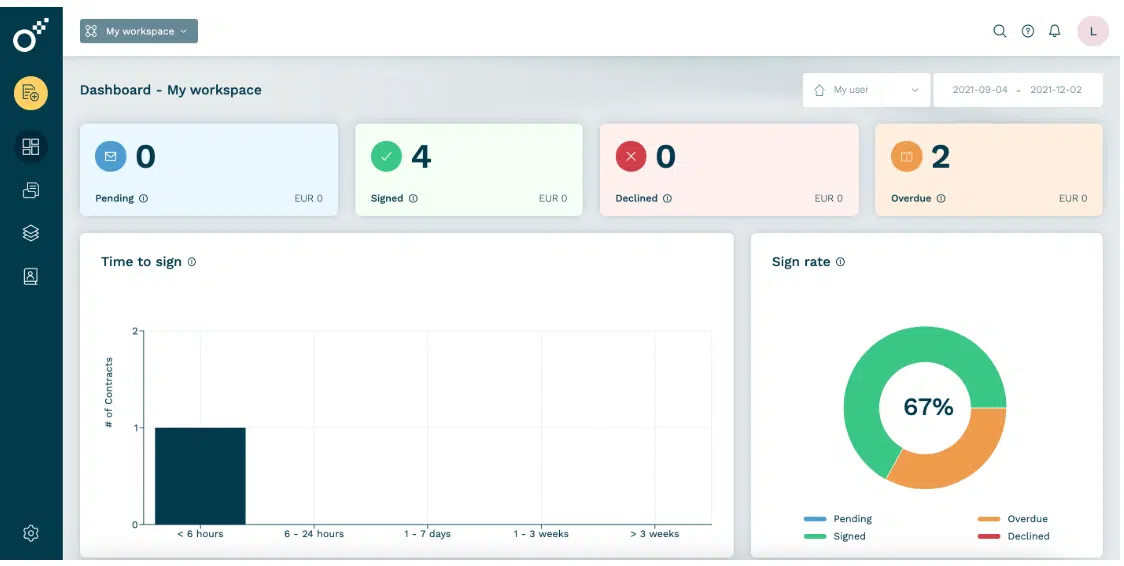
Oneflow is a contract management software with secure, legally binding digital signatures suitable for many business needs: from fast internal approvals to contracts requiring verified identities. Its digital signature API meets high standards of security, compliance and usability.
Apart from providing a secure and seamless signing experience, it has advanced contract management capabilities. You can create and manage contracts entirely online. Start from scratch or use a saved template, fill in the necessary details and send it for signing or create access links.
The API also lets you update contracts, add files or attachments and fill out data fields in the document. When all signatures are completed, the contract becomes active, and the system handles the status changes automatically. If needed, you can cancel, delete contracts or manage those that repeat over time.
Here’s what it includes.
Native support for both electronic and advanced digital signatures
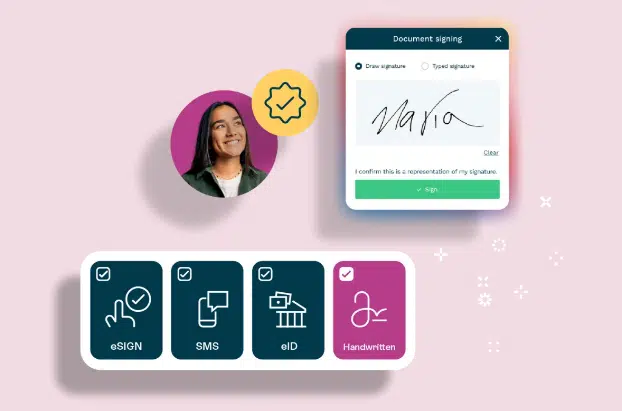
Our platform supports a variety of signature types, including standard electronic signatures, handwritten-style signatures, and advanced electronic signatures with a digital signature certificate. The platform’s flexible options ensure that every document gets the appropriate security and legal safeguards.
eIDAS compliance and EU-focused security
Oneflow’s digital signature API complies fully with the eIDAS regulation, which is crucial for legal validity and acceptance of electronic signatures across the European Union. This compliance ensures that the signatures you create with Oneflow meet strict standards for verifying identities and securing your documents.
Custom workflows and embedded signing
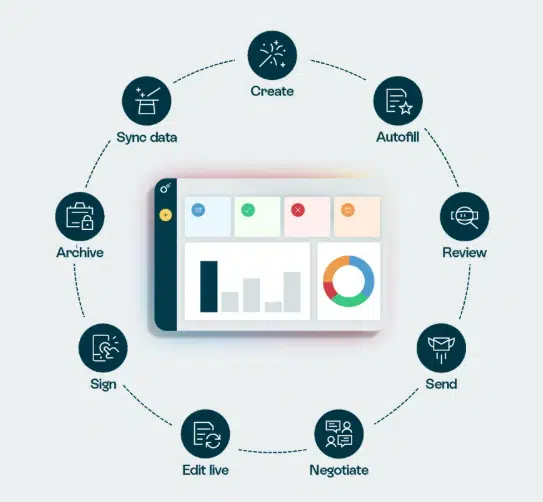
The API lets you create custom signing workflows tailored to your specific business needs. You can embed the signing process directly into your applications or websites. This feature supports complex contract creation processes, including multi-party signing and approval chains.
Real-time document tracking
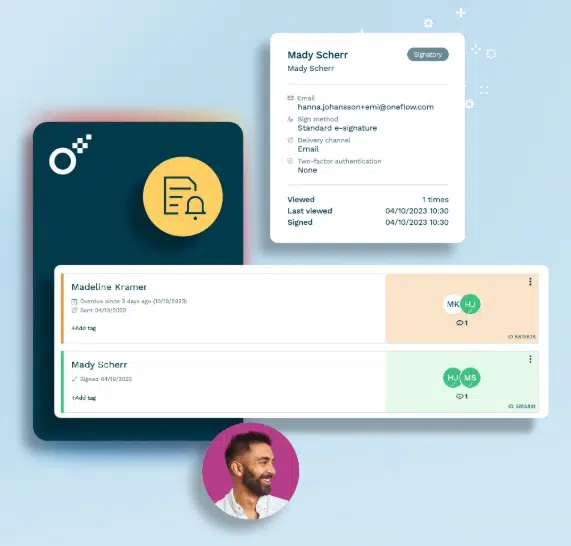
Oneflow offers real-time tracking of document status, letting you monitor contract opening, signing and completion. Take control of the contract lifecycle and promptly follow up, reducing delays and improving efficiency.
Security and compliance certifications
Security is a core focus for Oneflow. The platform is ISO 27001 certified, demonstrating adherence to rigorous information security management standards. All data and documents are hosted securely within the EU, ensuring compliance with data protection laws, including GDPR.
Top digital signature APIs compared
Here are some other solid digital signature API options.
Docusign
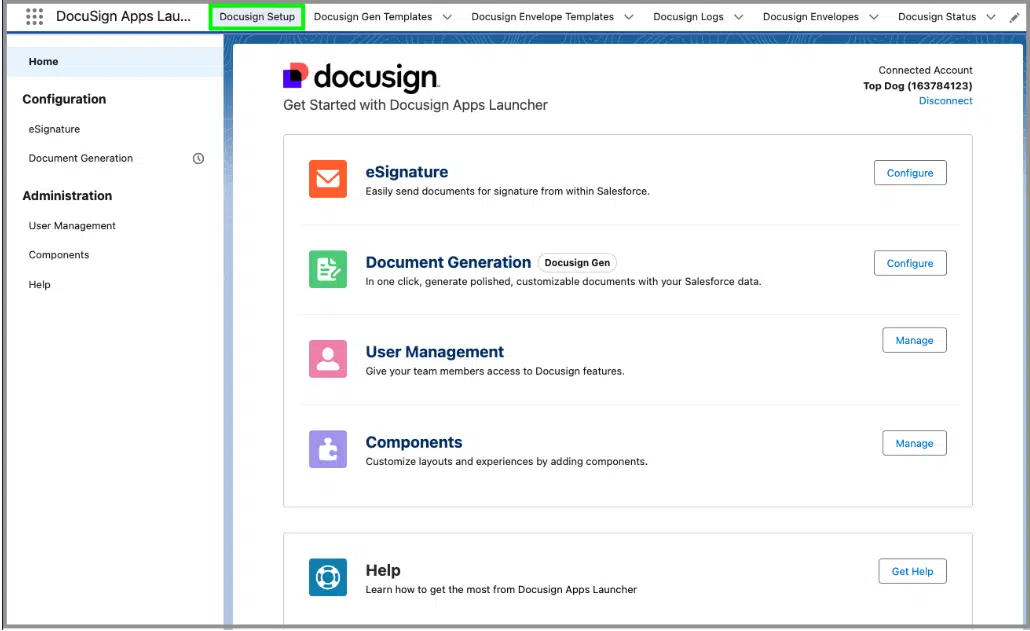
Docusign’s eSignature API supports sending signature requests via email or embedded signing within an app. It provides a smooth signing experience without redirecting users away from the platform. The API supports complex signing workflows, including sequential, parallel and mixed document routing. It supports a range of document types (.pdf, .docx, .xls, etc.) and automatically converts PDF form fields for signer input.
Read also: The 20 Best DocuSign Alternatives You Need to Know About
Xodo Sign
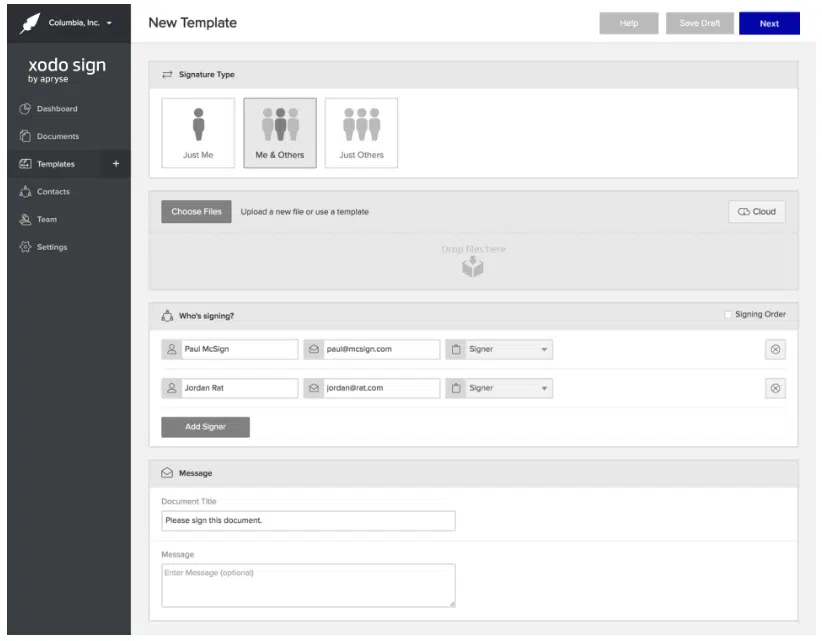
Xodo Sign supports multiple signature types, including drawn, typed or uploaded signatures. The API facilitates complex signing workflows involving multiple signers. Users can choose simultaneous or sequential signing with automated reminders and status tracking. Every signed document is accompanied by a full audit trail, capturing all signing events to support legal and compliance requirements.
PandaDoc
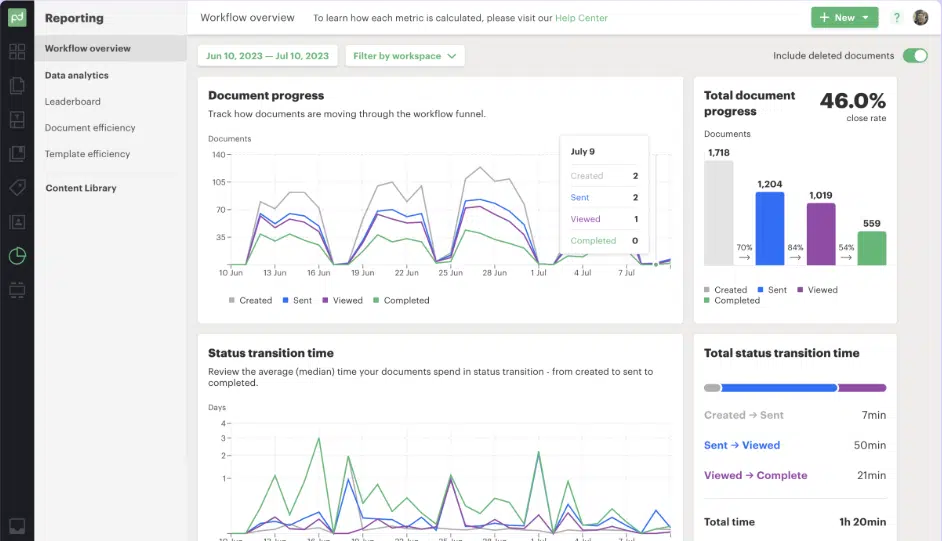
The PandaDoc digital signature API lets developers integrate electronic signature functionality directly into their software interfaces, websites or applications. It supports creating personalized documents on the fly, merging client data with reusable templates. Users can create automated workflows with features like approval routing, CRM integrations and automated reminders. The API complies with SOC2 and GDPR standards, and supports both electronic signatures and cryptographically secure digital signatures.
Read also: Top 20 PandaDoc alternatives and competitors in 2025
HelloSign (Dropbox Sign)
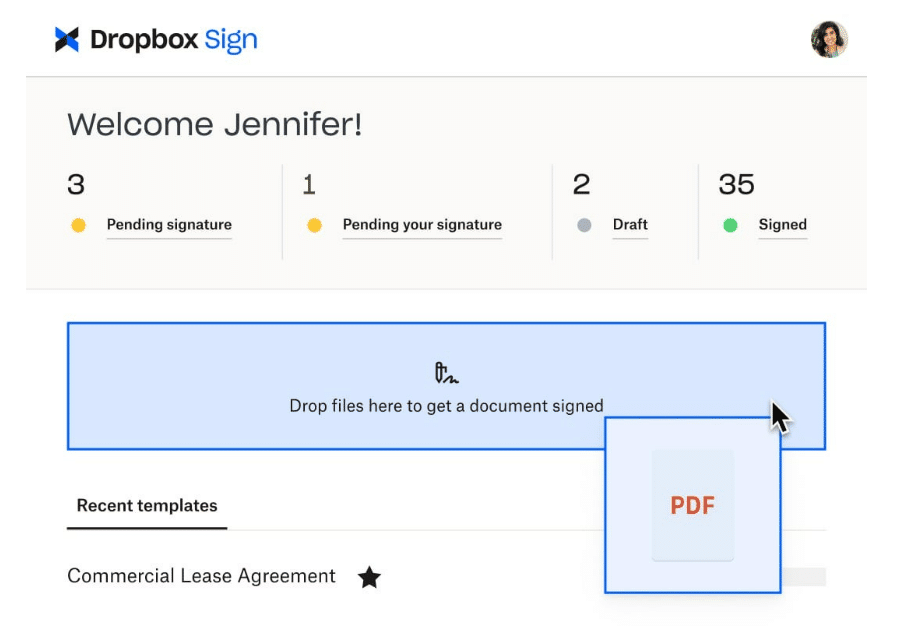
HelloSign, now known as Dropbox Sign, offers a digital signature API for fast and secure eSignature integration. It implements strong security measures, including AES 256-bit encryption, tamper-proofing of documents, and audit trails. The Dropbox Sign API offers various custom branding options, including adjustable emails, signer pages, and the removal of any mention of Dropbox Sign. It also provides advanced eSignature workflows, with multi-party signing, bulk sending, signer reassignment and variable signers.
Read also: PandaDoc vs HelloSign: Which E-Sign Tool Wins?
SignNow
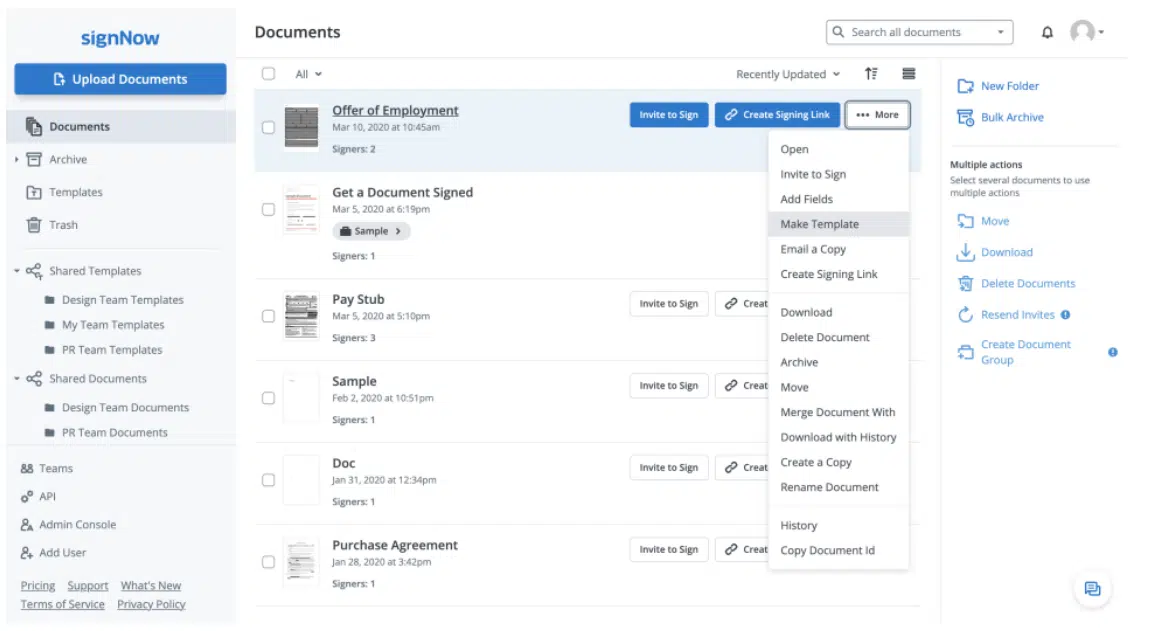
SignNow, part of the airSlate business cloud, provides a flexible digital signature API letting users create templates of frequently used documents and various types of fields such as text, signature, date, initials and dropdowns. The API supports sending documents to one or multiple signers with automated reminders and notifications via webhooks. It complies with major regulations and standards, including SOC 2 Type II, HIPAA, GDPR and eIDAS.
Read also: Docusign vs SignNow: Which e-sign option is right for your business?
Digital signature tools: Comparison table
| Tool | Compliance | Ease of integration | Notable features | Best for |
|---|---|---|---|---|
| Oneflow | eIDAS GDPR ISO 27001 ISO 9001 ISO 14001 | ⭐⭐⭐⭐ | Native support for both electronic and qualified electronic signatures eIDAS compliance Custom workflows and embedded signing Real-time document tracking ISO 27001 certified Secure hosting in the EU | Businesses focused on contract management and sales processesment teams HR teams |
| Docusign | eIDAS GDPR ESIGN HIPAA ISO: 27001, 27017, 27018 SOC 1 Type II | ⭐⭐ | Signature requests via email Embedded signing within an app Complex signing workflows Different document types (.pdf, .docx, .xls, etc.) | Financial services Healthcare Real estate Legal |
| Xodo Sign | GDPR SOC 2 Type I | ⭐⭐⭐ | Multiple signature types Complex signing workflows Simultaneous or sequential signing Automated reminders Status tracking Audit trails | Marketing IT services Real estate |
| PandaDoc | eIDAS GDPR ESIGN UETA HIPAA ISO 27001 | ⭐⭐⭐ | Dynamic document generation Template management Workflow automation Real-time status tracking Recipient management | Healthcare Finance Legal |
| HelloSign (Dropbox Sign) | eIDAS GDPR ESIGN UETA HIPAA ISO 27001 SOC 2 Type II | ⭐⭐⭐⭐ | Tamper-proofed documents AES 256-bit encryption Audit trails Customizable branding Advanced workflows | Human resources Sales and marketing FinanceLegal |
| SignNow | eIDAS GDPR ESIGN UETA HIPAA SOC 2 Type II | ⭐⭐⭐⭐ | Templates Various field types Multiple signers Automated reminders Webhook notifications | Finance Healthcare Government Insurance |
Sign safely with Oneflow digital signature API
From automating contract workflows to embedding secure signatures into your existing tools, a digital signature API can significantly improve efficiency across your business. Eliminate manual processes, save time and let your teams concentrate on what really matters: driving innovation, serving customers, and achieving impactful results.
As you evaluate options, focus on scalability, integration capabilities, security standards and how well the solution fits your existing tech stack and workflows.
Ready to see how much smoother contract management can be? Try Oneflow and discover a digital signature API that’s secure, flexible and built for modern business.
FAQs
What is API digital signature?
An API digital signature (also called a digital signature API or eSignature API) is a set of programmable tools that let developers embed an electronic or digital signature into applications, websites or workflows. With this integration, users can sign documents directly within the host application.
What’s the difference between eSignature and digital signature?
Electronic signatures indicate the signer’s intent to sign. It can be as simple as a scanned image of a handwritten signature, a typed name or a click-to-sign action. E-signatures don’t generally provide strong security or guarantee document integrity.
A digital signature is a specific type of electronic signature that uses cryptographic technology based on public key infrastructure (PKI). It creates a unique encrypted fingerprint of the document and the signer’s identity, ensuring the document wasn’t altered after signing and verifying the signer’s authenticity. Digital signatures provide a higher level of security, often required in regulated industries and official transactions.
Do I need coding knowledge to use a digital signature API?
If you’re a developer or building a custom integration, some coding knowledge is required. Digital signature APIs let developers seamlessly integrate signing functionality into other platforms (like CRMs, ERPs or custom apps). You’ll need to understand how to make API calls, handle authentication and connect the API to your software.
If you’re an end user, not a developer, you don’t need any coding. Most digital platforms that offer an API also have user-friendly interfaces and pre-built integrations. You can use them without writing code.


